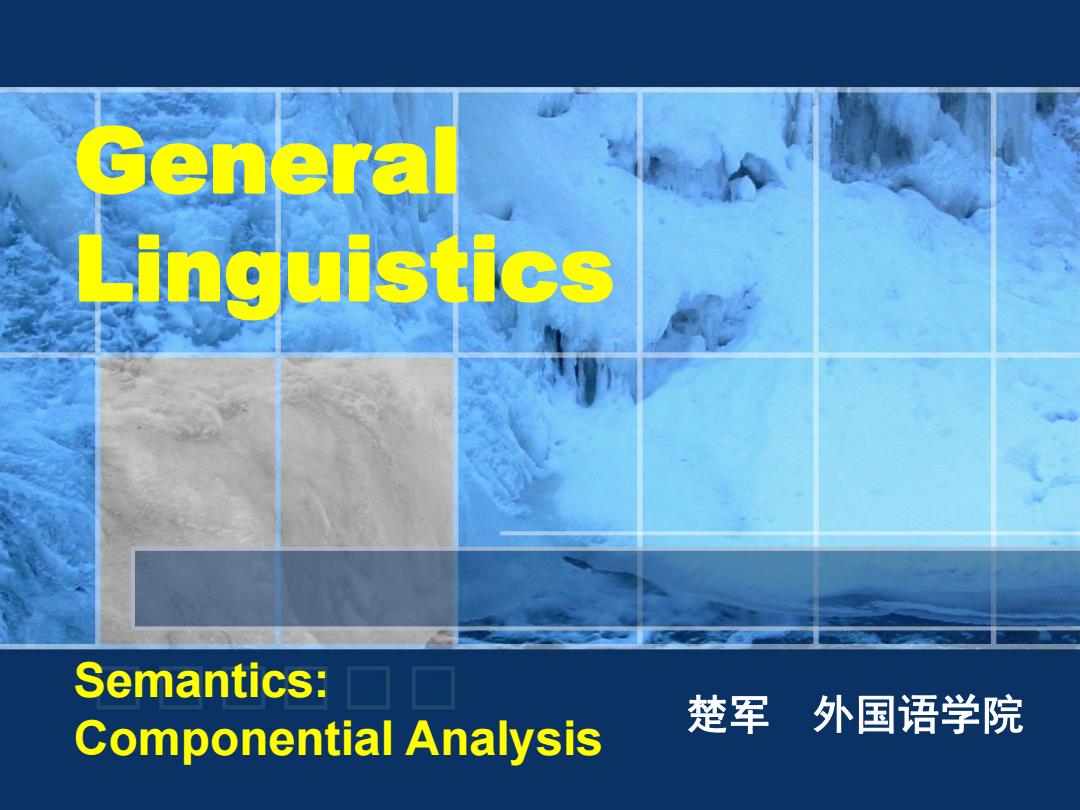
General Linguistics Semantics: 楚军 外国语学院 Componential Analysis
Semantics: Componential Analysis 楚军 外国语学院 General Linguistics
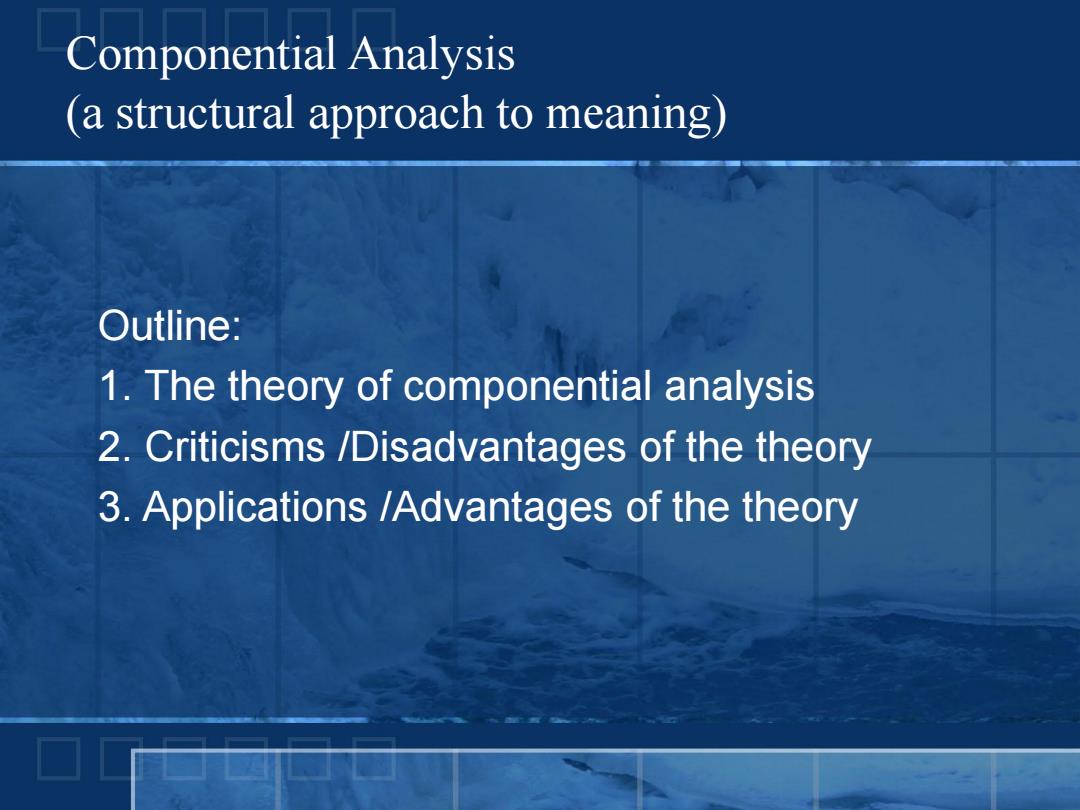
Componential Analysis (a structural approach to meaning) Outline; 1.The theory of componential analysis 2.Criticisms /Disadvantages of the theory 3.Applications /Advantages of the theory
Componential Analysis (a structural approach to meaning) Outline: 1. The theory of componential analysis 2. Criticisms /Disadvantages of the theory 3. Applications /Advantages of the theory
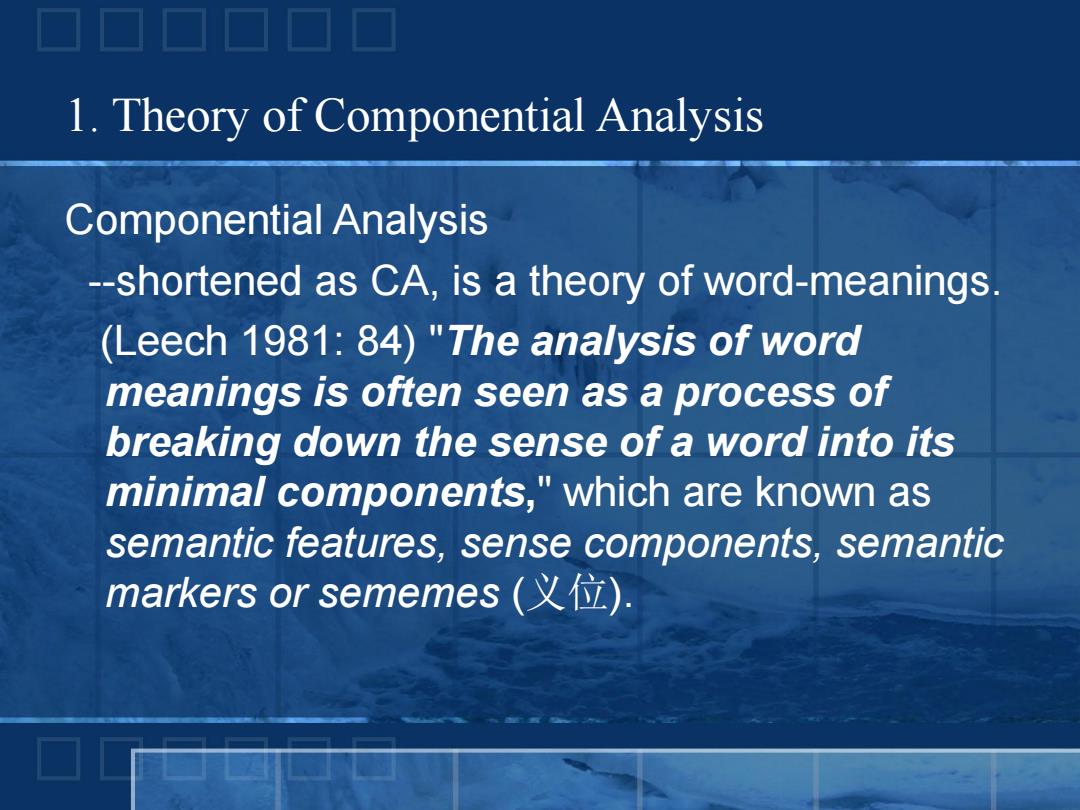
1.Theory of Componential Analysis Componential Analysis --shortened as CA,is a theory of word-meanings. (Leech 1981:84)"The analysis of word meanings is often seen as a process of breaking down the sense of a word into its minimal components,"which are known as semantic features,sense components,semantic markers or sememes(义位)
1. Theory of Componential Analysis Componential Analysis --shortened as CA, is a theory of word-meanings. (Leech 1981: 84) "The analysis of word meanings is often seen as a process of breaking down the sense of a word into its minimal components, " which are known as semantic features, sense components, semantic markers or sememes (义位)

1.Theory of Componential Analysis A B (1) man woman child (2) ram ewe lamb (3) drake duck duckling (4) stallion mare foal (5) boar SOW piglet (6) rooster hen chicken
1. Theory of Componential Analysis A B C (1) man woman child (2) ram ewe lamb (3) drake duck duckling (4) stallion mare foal (5) boar sow piglet (6) rooster hen chicken
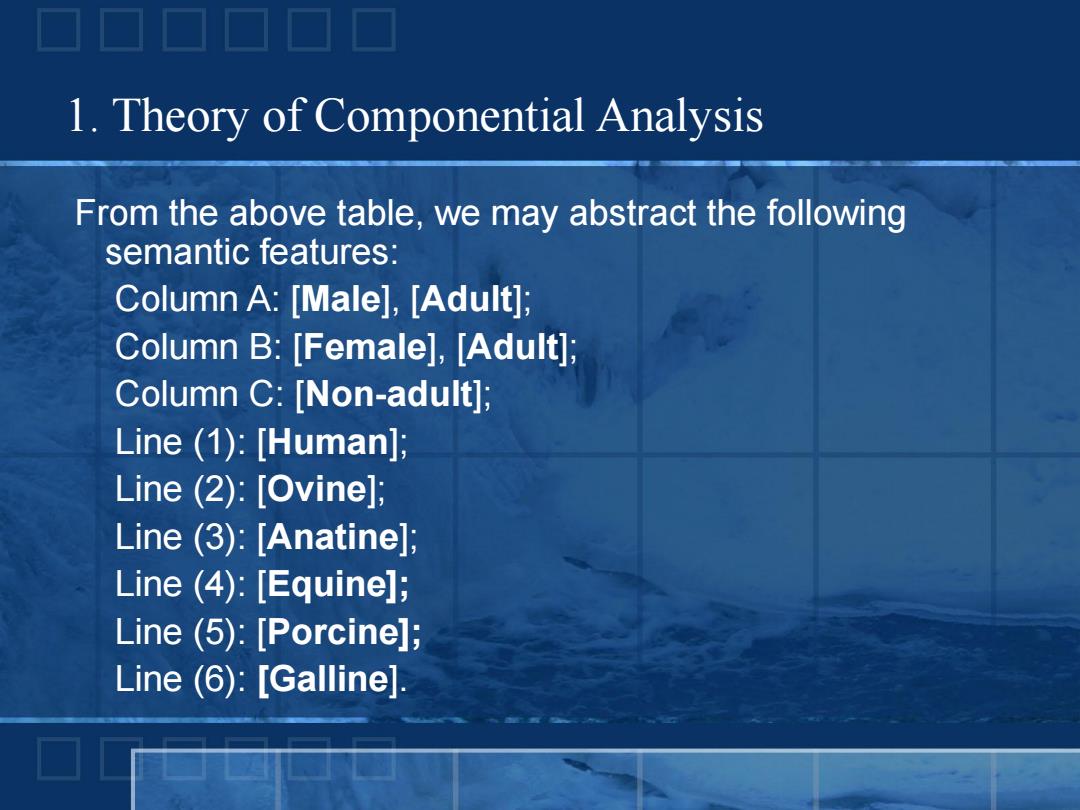
1.Theory of Componential Analysis From the above table,we may abstract the following semantic features: Column A:[Male],[Adult]; Column B:[Female],[Adult]; Column C:[Non-adult]; Line (1):[Human]; Line (2):[Ovine]; Line (3):[Anatine]; Line (4):[Equine]; Line (5):[Porcine]; Line (6):[Galline]
From the above table, we may abstract the following semantic features: Column A: [Male], [Adult]; Column B: [Female], [Adult]; Column C: [Non-adult]; Line (1): [Human]; Line (2): [Ovine]; Line (3): [Anatine]; Line (4): [Equine]; Line (5): [Porcine]; Line (6): [Galline]. 1. Theory of Componential Analysis
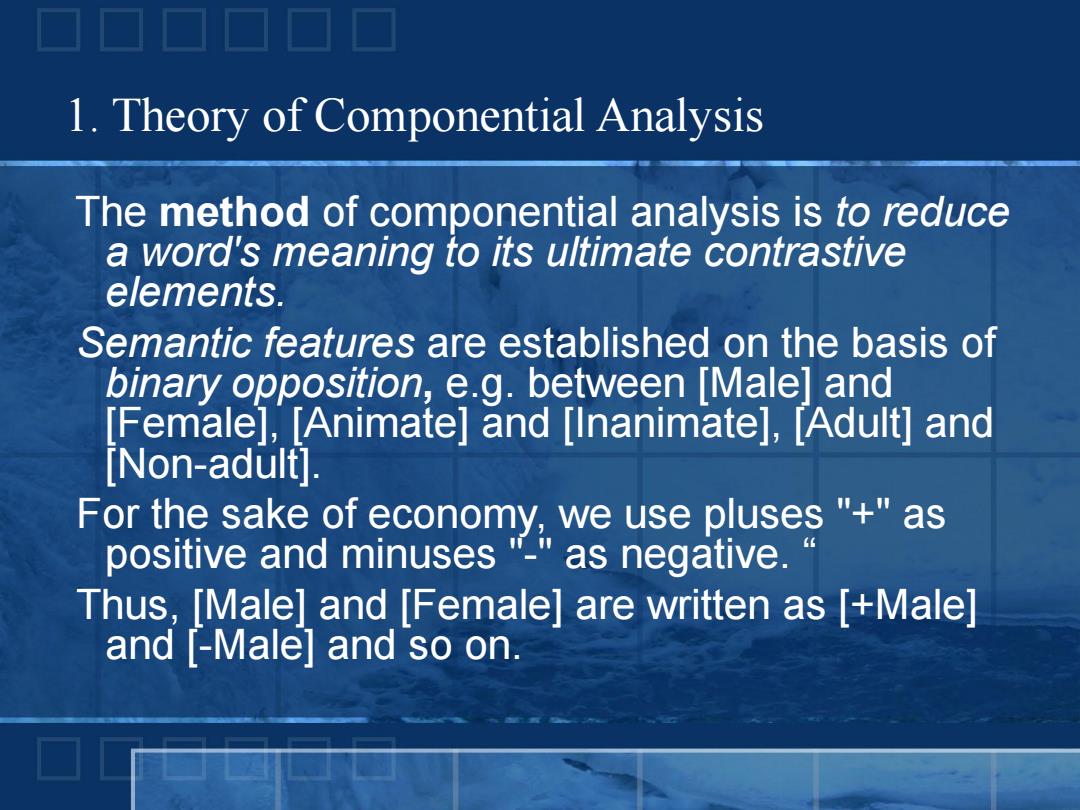
1.Theory of Componential Analysis The method of componential analysis is to reduce a word's meaning to its ultimate contrastive elements. Semantic features are established on the basis of binary opposition,e.g.between [Male]and [Female],[Animate]and [Inanimate],[Adult]and [Non-adult]. For the sake of economy,we use pluses "+as positive and minuses "_as negative. Thus,[Male]and [Female]are written as [+Male] and [-Male]and so on
The method of componential analysis is to reduce a word's meaning to its ultimate contrastive elements. Semantic features are established on the basis of binary opposition, e.g. between [Male] and [Female], [Animate] and [Inanimate], [Adult] and [Non-adult]. For the sake of economy, we use pluses "+" as positive and minuses "-" as negative. “ Thus, [Male] and [Female] are written as [+Male] and [-Male] and so on. 1. Theory of Componential Analysis
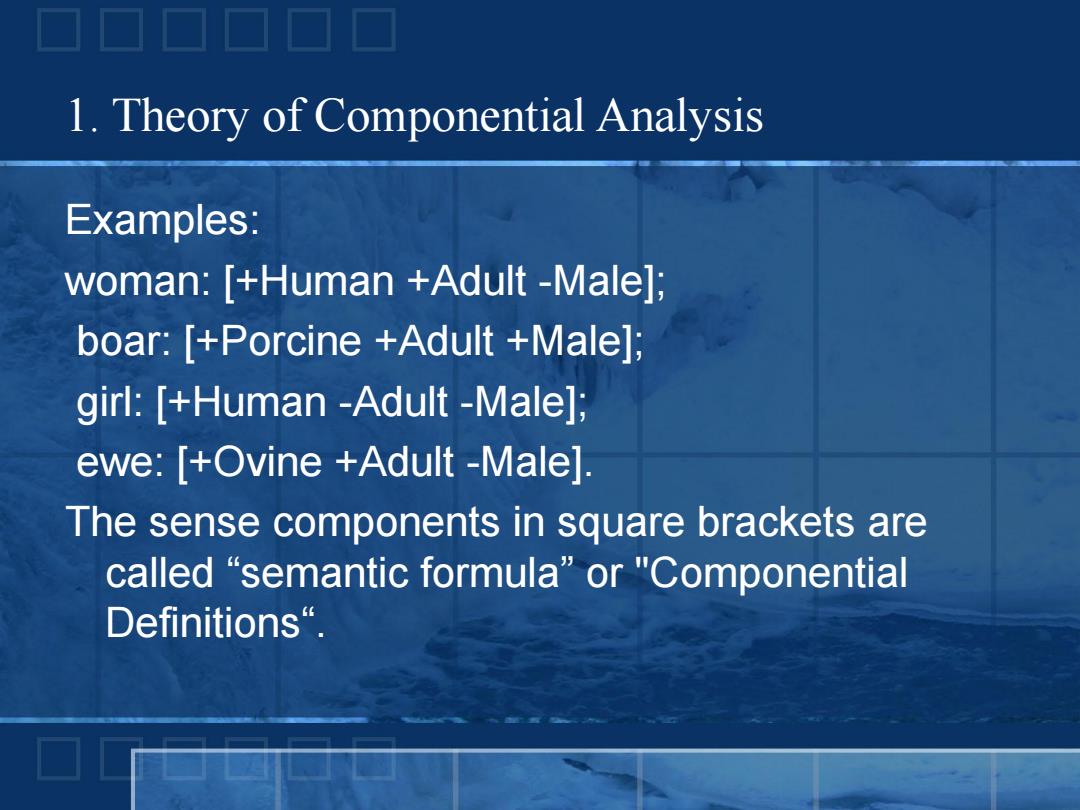
1.Theory of Componential Analysis Examples: woman:[+Human +Adult -Male]; boar:[+Porcine +Adult +Male]; girl:[+Human -Adult -Male]; ewe:[+Ovine +Adult -Male]. The sense components in square brackets are called“semantic formula”or"Componential Definitions
Examples: woman: [+Human +Adult -Male]; boar: [+Porcine +Adult +Male]; girl: [+Human -Adult -Male]; ewe: [+Ovine +Adult -Male]. The sense components in square brackets are called “semantic formula” or "Componential Definitions“. 1. Theory of Componential Analysis
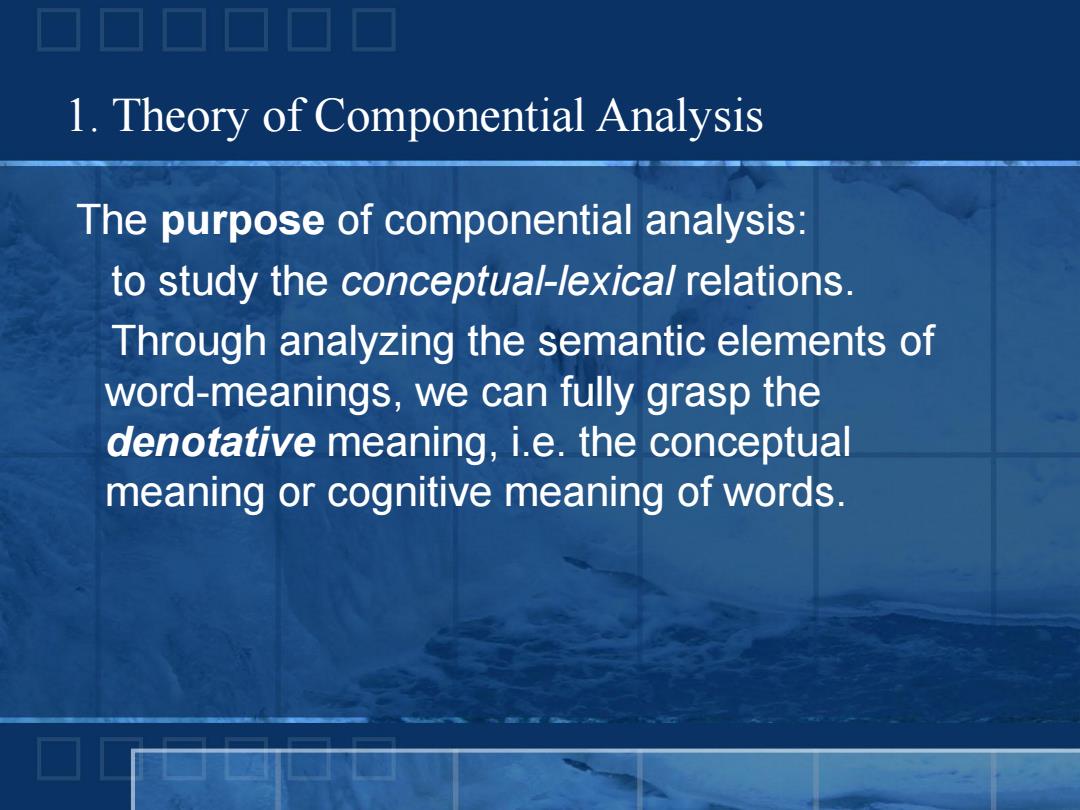
1.Theory of Componential Analysis The purpose of componential analysis: to study the conceptual-lexical relations. Through analyzing the semantic elements of word-meanings,we can fully grasp the denotative meaning,i.e.the conceptual meaning or cognitive meaning of words
The purpose of componential analysis: to study the conceptual-lexical relations. Through analyzing the semantic elements of word-meanings, we can fully grasp the denotative meaning, i.e. the conceptual meaning or cognitive meaning of words. 1. Theory of Componential Analysis

2.Criticisms of componential analysis Firstly,it is often said that CA accounts for only some parts of a language's vocabulary, especially that range of vocabulary with semantic oppositions,such as "man,woman; prince,princess;bull,cow,etc.". Secondly,it is often objected that CA suffers from a "vicious circle"in that it merely explains one set of symbols (e.g.English words)by another set of symbols (which turn out to be English words)
2. Criticisms of componential analysis • Firstly, it is often said that CA accounts for only some parts of a language's vocabulary, especially that range of vocabulary with semantic oppositions, such as "man, woman; prince, princess; bull, cow, etc.". • Secondly, it is often objected that CA suffers from a "vicious circle" in that it merely explains one set of symbols (e.g. English words) by another set of symbols (which turn out to be English words)
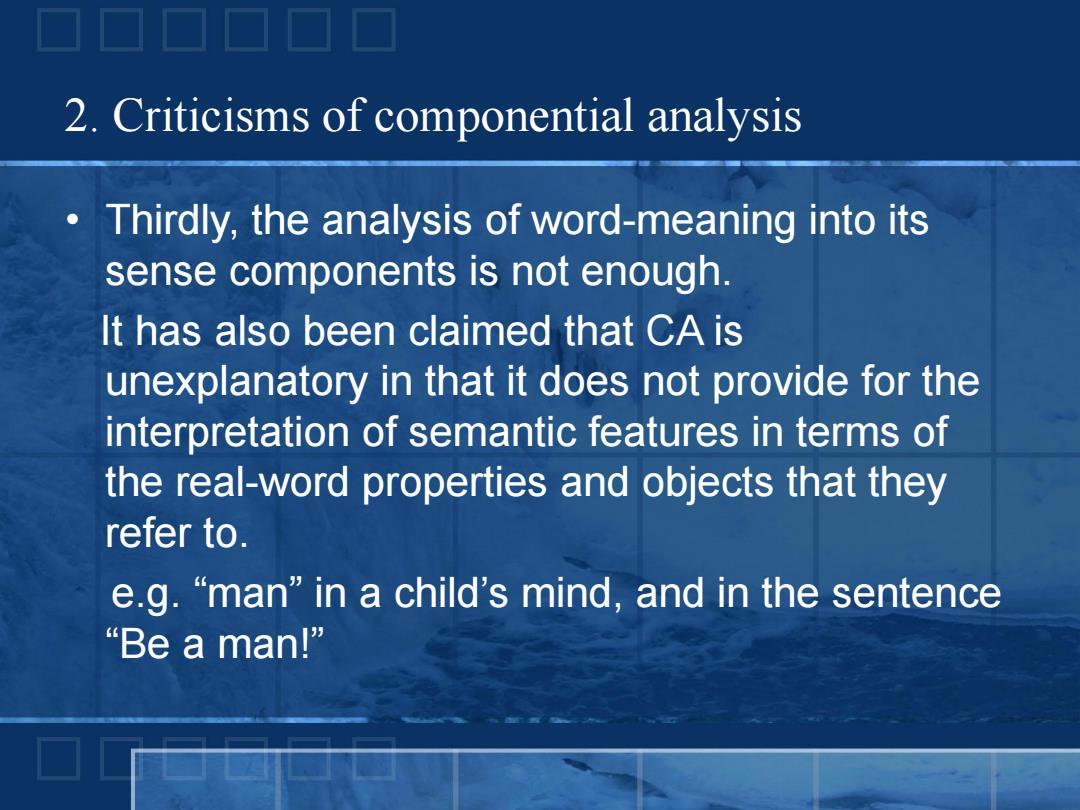
2.Criticisms of componential analysis Thirdly,the analysis of word-meaning into its sense components is not enough. It has also been claimed that CA is unexplanatory in that it does not provide for the interpretation of semantic features in terms of the real-word properties and objects that they refer to. e.g."man"in a child's mind,and in the sentence “Be a man!
• Thirdly, the analysis of word-meaning into its sense components is not enough. It has also been claimed that CA is unexplanatory in that it does not provide for the interpretation of semantic features in terms of the real-word properties and objects that they refer to. e.g. “man” in a child’s mind, and in the sentence “Be a man!” 2. Criticisms of componential analysis